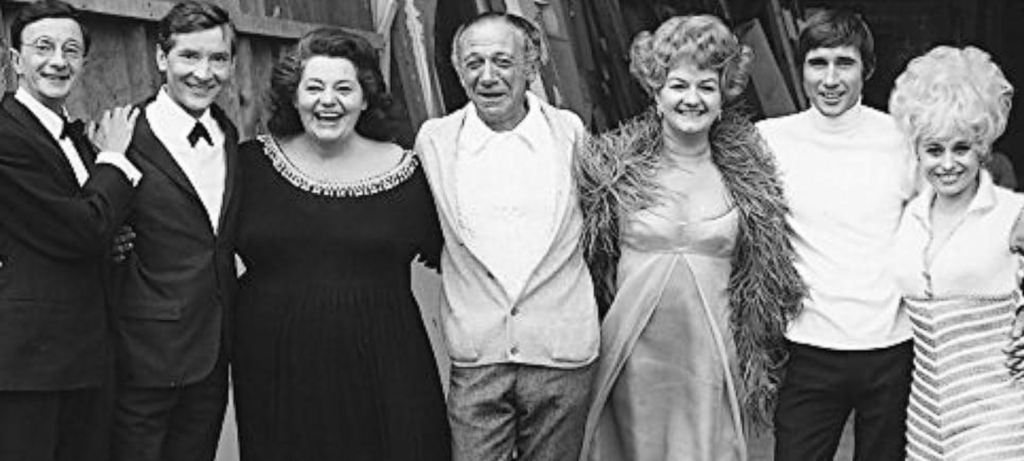
Relive the Laughter: Exploring the Timeless Humor of the ‘Carry On’ Film Series
The “Carry On” film series, a cornerstone of British comedy, began in 1958 and continued its comedic journey until 1992, producing a total of 31 films. With its bawdy humor, slapstick comedy, and memorable innuendos, the series carved out a unique niche in the annals of cinematic history. The enduring appeal of “Carry On” lies not only in its humor but also in its ability to capture the essence of British wit and charm, creating a legacy that continues to entertain audiences worldwide.
The Ensemble Cast: The Heart of “Carry On”
A significant factor in the success of the “Carry On” series was its recurring ensemble cast, featuring a lineup of beloved actors who became synonymous with the franchise. Charles Hawtrey, Kenneth Williams, Hattie Jacques, Sidney James, Joan Sims, Jim Dale, and Barbara Windsor brought their distinctive comedic styles to each film, creating a sense of familiarity and continuity that endeared them to audiences.
Each actor contributed a unique flavor to the series. Kenneth Williams, with his exaggerated facial expressions and sharp wit, often played pompous and uptight characters. Sidney James’s roguish charm and infectious laugh made him a fan favorite, while Hattie Jacques’s portrayals of authoritative yet humorous figures added a layer of sophistication to the comedy. Barbara Windsor’s playful and cheeky performances, particularly in her later appearances, encapsulated the series’ spirit of fun and mischief.
A Journey Through Time and Settings
One of the defining characteristics of the “Carry On” series was its ability to transport audiences to various historical and contemporary settings, all while maintaining its signature comedic style. The films ranged from ancient Rome in “Carry On Cleo” (1964) to the medieval period in “Carry On Henry” (1971), and even ventured into the Wild West with “Carry On Cowboy” (1965).
Despite the varying backdrops, each film retained a consistent comedic approach, filled with double entendres, slapstick humor, and a healthy dose of satire. The historical settings allowed the series to poke fun at different eras and societal norms, while the contemporary settings often parodied British institutions such as healthcare (“Carry On Nurse,” 1959) and education (“Carry On Teacher,” 1959).
Cultural Phenomenon and Box Office Success
The “Carry On” films became a cultural phenomenon in the UK, resonating with audiences from all walks of life. Their humor, though often risqué, was rooted in a sense of innocence and playfulness that appealed to viewers of all ages. The series’ popularity was reflected in its box office success; despite varying critical reception, the films consistently drew large audiences, ensuring their profitability and longevity.
The catchphrases and characters from the “Carry On” series became ingrained in British pop culture. Lines like “Infamy, infamy, they’ve all got it in for me!” from “Carry On Cleo” and the numerous comedic personas portrayed by the ensemble cast remain iconic to this day.
Enduring Appeal and Legacy
The appeal of the “Carry On” series extends beyond its original run. The films have been re-released on various home media formats and continue to be broadcast on television, introducing new generations to their timeless humor. The series’ ability to make audiences laugh, regardless of the era, speaks to the universality of its comedy.
Moreover, the “Carry On” films hold a special place in the history of British cinema, representing a period when comedy was unabashedly silly, irreverent, and joyful. The series’ influence can be seen in later British comedies and has inspired countless comedians and filmmakers.
Conclusion
The “Carry On” film series stands as a testament to the enduring power of humor and the impact of a talented ensemble cast. Its blend of slapstick, innuendo, and sharp wit continues to entertain and delight audiences, proving that good comedy is truly timeless. As we relive the laughter and explore the legacy of “Carry On,” we celebrate not only the films themselves but also the joy and laughter they have brought to countless viewers around the world.